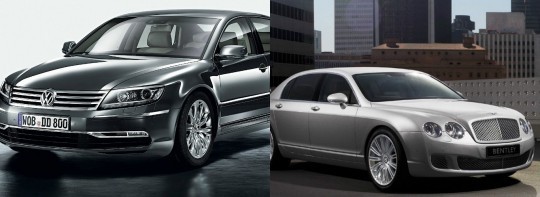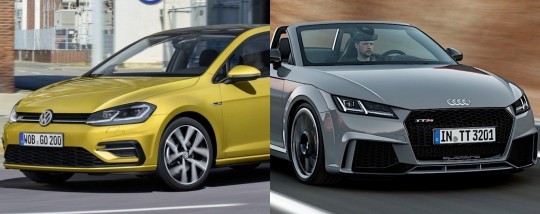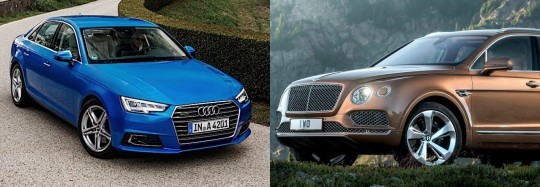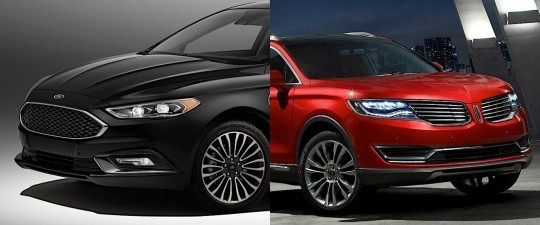This practice still exists, and it will intensify over the next few years. It comes with the benefit of reducing development costs, and with the ability to make new body styles on the same base without massive investments. Automakers get to offer more products in their lineups, and clients get to choose something that is closer to the car of their dreams.
It sounds like a win-win situation, and there’s only one downside. We are referring to the word that all automakers have begun to fear: recall. If something goes wrong with the base of a platform that was used for hundreds of thousands of vehicles, the said recall is going to be horrendously expensive.
Just look at Volkswagen’s Dieselgate and the costs associated with it. The Volkswagen Group will have to spend billions to fix all of the affected cars, pay fines, and nobody has calculated the effects it had on the company’s image. In the case of Dieselgate, the cost came from vehicles sharing an engine architecture that relied on a “defeat device” to trick emissions tests.
With the new platform solutions employed these days, a sub-par component from a supplier could lead to a disaster for any corporation. Fortunately, cars have been designed with a large concern in the past few years, and quality control is an indispensable member of the production process for any company, but mistakes can still happen.
The phenomenon of platform sharing goes further than a single brand, so we decided to see what cars share a technological base and have significantly different prices. This article will focus on the extremes found today in production vehicles, with a few mentions that have recently ended their production cycle.GM E2XX – from $21,680

The successor of the second-generation Epsilon platform from General Motors is called E2XX. It was designed to reduce the weight of the cars that are built on it without affecting their capacities. Their engines and interiors were improved over their predecessors, and the wheelbase has been increased.
This platform has had its variations, and it is expected to have a few more modifications applied before it is replaced with something else. The first General Motors product to receive it is the 2016 Chevrolet Malibu. To the best of our knowledge, this seems to be the most affordable car to get the platform.
Meanwhile, the E2XX has received two derivatives – P2XX and C1XX. The first of them is an extended wheelbase version, which will reach the next-generation Chevrolet Impala and the 2017 Buick LaCrosse.
The crossover derivative is offered on more expensive models, which include the 2017 GMC Acadia, 2018 Chevrolet Traverse, 2018 Buick Enclave, and the 2017 Cadillac XT5. The latter is the most expensive GM product currently offered on a derivative of the E2XX, and its starting MSRP is almost twice as much as the Malibu ($39,995 for the 2017 XT5, $21,680 for 2017 Malibu).Volkswagen Group D1 – from €70,000

The fourth generation of Volkswagen D-platform, which should not be confused with the old D1, currently referred to as D11, used to underpin the Volkswagen Phaeton. While its production ended last year, it was the most expensive Volkswagen automobile ever offered. It has a few technologies from the D3 platform of the same group, but its has a conventional steel construction instead of Audi’s aluminum space frame.
The other model built on this platform was a Bentley. While the most expensive Volkswagen automobile ever offered was far from affordable or cheap, a Bentley product had a starting price over two times higher than its VW “cousin.” The Phaeton started at significantly less than €100,000, while its Bentley "relative" started at over €200,000 and could get even more expensive very easily. We are referring to the Continental Flying Spur, which had some units built in Volkswagen’s Transparent Factory in Dresden, Germany when it was introduced.
The Continental part of the model name was removed with the introduction of the Flying Spur, but most of the platform has remained unchanged. The other Bentley model to feature parts from the Volkswagen D1 platform is the Continental GT. It also shares a V8 engine with Audi, but there’s nothing wrong with that, is it? Volkswagen Group MQB – from $19,895

The MQB architecture is something that Volkswagen will rely on for the next decade, and it will be utilized as a base for many of its products. From small cars to large family crossovers, Volkswagen will build almost everything on this base. It currently replaces three platforms from VW, and almost everything else from VW will get it.
A few exceptions will exist, evidently, which include the Volkswagen Touareg, the Amarok pickup truck, and several other models, like the Crafter van. The most affordable car that will be built on the MQB platform is the upcoming generation of the Volkswagen Polo. Currently, the cheapest car you can buy in Europe with VW’s MQB is the Skoda Octavia, followed by the Volkswagen Golf.
Meanwhile, the most expensive car made on Volkswagen’s MQB platform is the ongoing Audi TT-RS Roadster, which is not currently available in the USA. Americans are offered the TTS Coupe, which is less powerful than the TT RS, but still starts at $52,000, while the corresponding base model Golf starts at $19,895. In Europe, the TT RS Roadster starts at €69,200, while Volkswagen's Golf starts at €18,850 on the same market. Volkswagen Group MLB2 – from $34,900

With the third example from the Volkswagen Group, you might imagine we have something against the German consortium. We don’t, but we added up these examples thanks to the transparency of the company’s platform scheme, along with its habit of announcing what is the base of each car.
The VW Group also happens to have many platform-sharing models in production today, and some of them fit like a glove into the theme of this article. The MLB2 platform is a good example of just how well you can integrate shared components in cars that are extremely different.
Sometimes referred to as MLB Evo, the second-generation MLB platform was first launched in the Audi Q7. However, the most affordable car fitted with it is the B9 generation of the Audi A4, and it starts at $34,900. Meanwhile, the most expensive automobile you can buy (if you are wealthy enough to afford it) is the Bent
ley Bentayga, which starts at over $200,000. You can imagine that their components are not interchangeable, because of the size differences between them, but some bits and bobs are still shared.Ford CD4 – from $22,120

Ford did a lot of platform sharing, and it still happens today with its Lincoln range. Evidently, the cars from the Blue Oval also happen to be underpinned on the same platform every once in a while, and there’s nothing wrong with the practice. Back in the day, when Ford owned Volvo, Aston Martin, and Jaguar Land Rover, the American company made some interesting synergies.
Apart from “sticking” two V6 engines to make a V12 for Aston Martin, which did not happen literally (duh), you could find interesting blends within the Ford Motor Corporation back in the day.
The most recent of them was the EUCD platform, which was used for the previous generation of the Ford Mondeo (Europe’s Fusion), but was available with modifications on the Volvo S60, V60, V70, S80, and a few more. With significant changes, the said platform turned into the LR-MS, which underpins the Range Rover Evoque.
Currently, the Ford Mondeo (Fusion on U.S. soil) is based on the CD4 platform, which underpins models like the Lincoln MKX, and that model starts at just shy of twice what Ford asks for a Fusion in the USA. FYI, the 2017 Ford Fusion starts at $22,120, while the 2017 Lincoln MKX starts at $38,260. According to some reports, the 2017 Continental also borrowed the platform, but it was “tailored” to the vehicle’s size.








